
A couple of months ago, maybe it was many weeks, I saw on the TV show, “Cops” with utter disgust a Bapuji and Biji, being a form of “entertainment” for a domestic violence assault. Along with my disgust, anger, and sorrow I had a “well yea it happens … you think it’s that shocking” attitude. I wasn’t “shaken” or “shocked” by the show because I knew this story was a reflection of what happens in many Punjabi Sikh homes in  thing again … what if Bibiji needs to leave him, permanently or just for a while, but has no family in the United States are close to the Central Valley where she may be working… where will she go? Plus, just the utter embarrassment she may feel because in their “budhaphaa” (i.e. older age) they are still facing this issue and she has to ask for help.
thing again … what if Bibiji needs to leave him, permanently or just for a while, but has no family in the United States are close to the Central Valley where she may be working… where will she go? Plus, just the utter embarrassment she may feel because in their “budhaphaa” (i.e. older age) they are still facing this issue and she has to ask for help.
I’m wondering what anti-domestic violence advocacy campaigns and shelters are doing to address the issues faced by elderly women. The advocacy and services they offer save lives and offer hope to help women escape a cycle of violence. It think they tend to be geared more towards meeting the needs of younger women and their children. They may not explicitly state that or have policies restricting elderly women from receiving their much-needed services, but I have a feeling younger women frequent them more often not because more younger women may face the issue of domestic violence or live in the Diaspora. I think it’s because elderly women may just be more hesitant to reach out for their services at their age. I wonder what services these women’s organizations have to meet the needs of elderly South Asian, specifically Punjabi Sikh, women who are primarily of immigrant background? The circumstances of elderly Punjabi Sikh women are similar but also very different compared to those who are younger. Factors leading to these differences range from length of marriage to having grandchildren as well as son and daughter-in-laws. The reasons and circumstances for immigration may be different as well. Some elderly couples immigrate, at times, to help build an economic base and
Any ideas about domestic abuse in South Asian elderly couples, specifically those of Punjabi Sikh background? How about available resources?
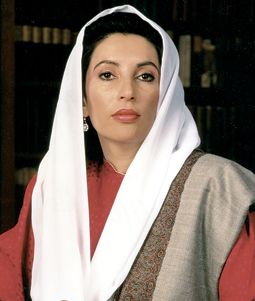 The news is ablaze; the blogs are on fire; Rawalpindi and Sind are burning. Former Pakistani Prime Minister, Benazir Bhutto, was assassinated today at a political rally in Rawalpindi, Pakistan.
The news is ablaze; the blogs are on fire; Rawalpindi and Sind are burning. Former Pakistani Prime Minister, Benazir Bhutto, was assassinated today at a political rally in Rawalpindi, Pakistan.
While few Sikhs will shed any tears for Bhutto as she was personally responsible for the deaths of many Sikhs during the 1980s, the current crisis of the neighboring state cannot be ignored.
The ramifications for the global ‘war on terror’ are yet unknown. In Pakistani circles, most believed that a Washington-brokered power-sharing agreement had been reached between General Musharraf and Bhutto. Despite the General’s declaration of ‘martial law,’ Bhutto’s criticisms had been muted. However her outcry became shriller as opposition within her political party called for her stronger support towards its beleaguered party members, who were coming under arrest and greater security scrutiny. In recent times the relationship (at least in the media) has soured.
The ramifications for Pakistani democracy may be severe. Many are speculating that Musharraf will use this event to postpone (perhaps indefinitely) the upcoming elections and further trample on any that oppose him.
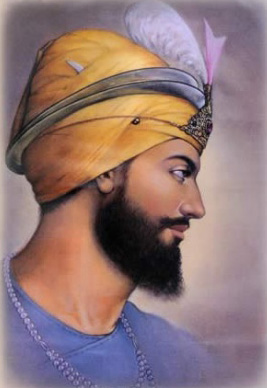 This time of the year always makes me wonder how children in our community perceive Christmas. As a child I don’t remember having a Christmas tree in my house or any talk about Santa Claus coming with gifts (maybe my parents wanted to “keep it real” for me!). However, now that I have a niece and nephew, I do wonder how to create a sense of celebration for them so they don’t feel isolated from their non-Sikh friends. New Year’s day has always held more significance for me, and our family tradition is starting the year with a sense of peace and renewal by attending the Gurdwara.
This time of the year always makes me wonder how children in our community perceive Christmas. As a child I don’t remember having a Christmas tree in my house or any talk about Santa Claus coming with gifts (maybe my parents wanted to “keep it real” for me!). However, now that I have a niece and nephew, I do wonder how to create a sense of celebration for them so they don’t feel isolated from their non-Sikh friends. New Year’s day has always held more significance for me, and our family tradition is starting the year with a sense of peace and renewal by attending the Gurdwara.
Family friends of ours in Toronto have been creating a Sikh celebration, in a sense, for their children on Christmas day. The children put ornaments on their Khalsa Tree, and wait for Santa Singh to bring their gifts. (I am also pretty sure ladoos are awaiting him as an alternative to cookies!). They don’t celebrate the birth of Christ, but instead the birth of our tenth guru, Guru Gobind Singh Ji. When I first heard about their tradition I was impressed that someone had thought to substitute every part of the day in order to teach their children our traditions, and at the same time do the things that go along with the commercialistic nature of the holiday.
Often I find myself teaching many of my non-Sikh friends about the special days we have in our religion throughout the year. They really enjoy learning about my religion and I feel it’s important especially since they would not normally have the opportunity to be educated about Sikhs and what we stand for. One friend once commented how lucky I was to have so many days to celebrate. He was absolutely right – we really are blessed to have the opportunity to celebrate our strong history throughout the year. If as a community we can begin to incorporate the importance of our history and these days into the next generation, we can truly preserve an essence of what Sikhi has to offer.
So Modi and the BJP win again. Kill 2,000 Muslims and become Chief Minister. Hardly new. Kill 3,000 Sikhs and become Minister for Overseas Indian Affairs.
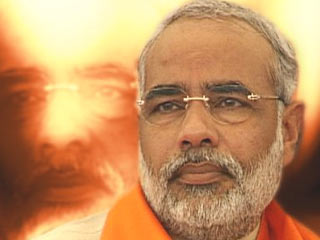 Reasons for Modi’s victory will soon flow: his cult of personality, the use of xenophobic propaganda against “jihadis” (Read: Muslims), the reaction against the anti-Modi media, slogans of development success and Gujarat’s economic boom in the last few years. While the majority in Gujarat will celebrate their victory, I am left wondering.
Reasons for Modi’s victory will soon flow: his cult of personality, the use of xenophobic propaganda against “jihadis” (Read: Muslims), the reaction against the anti-Modi media, slogans of development success and Gujarat’s economic boom in the last few years. While the majority in Gujarat will celebrate their victory, I am left wondering.
Does development trump human rights?
Modi is no longer a Gujarati politician. He is an international Indian star. Nowhere is his popularity as strong as that which he receives from the Patels and NRIs in America. While some assumed the Congress victory in 2004 was a turning point in the electorate, the sheer popularity of Modi’s brand of Hindutva has made him a national level politician. That Sonia Gandhi had to directly intervene to challenge Modi and then to fail will catapult Modi’s stock. He is Hindutva’s celebrity.
The Congress Party’s history and rhetoric offers few opportunities for ambitious political elites. In the new India it is Hindutva that represents the greatest possibility for change. Modi is this change. He is India.
Gurharpal Singh in his Ethnic Conflict in India: A Case-Study of Punjab made this same prediction eight years ago. He saw two possibilities of the Hindutva end game,
either towards a continental assertion of Hindutva or its contraction to the core.
Either the Hindutva agenda will reign supreme or the periphery regions (Kashmir, Punjab, Nagaland, Assam, etc.) that are not Hindu and can mobilize on non-Hindu icons and culture will look for another alternative.
Many of our recent posts have involved discussion about relationships and gender differentiations in our community. So on Thursday, when I drafted this post, I decided to read the “hukamnama” from Darbar Sahib Amritsar and see what Guru Granth Sahib Ji had to say that day.
For those of you who are novice to hukamnamas – a “hukamnama” is a royal edict or decree. In the Sikh context, the hukamnama serves as a command from the Guru, a lesson in the Sikh perspective, and is something to reflect upon for (at least) the day. The hukamnama for that day was as follows:
Sorat(h) Mehalaa 5 Ghar 2 Dhupadhae
Ik oa(n)kaar Sathigur Prasaadh ||
Sagal banasapath mehi baisa(n)thar sagal dhoodhh mehi gheeaa ||
Ooch neech mehi joth samaanee ghatt ghatt maadhho jeeaa ||1||
Sa(n)thahu ghatt ghatt rehiaa samaahiou ||
Pooran poor rehiou sarab mehi jal thhal rameeaa aahiou ||1|| rehaao ||
Gun nidhhaan naanak jas gaavai sathigur bharam chukaaeiou ||
Sarab nivaasee sadhaa alaepaa sabh mehi rehiaa samaaeiou ||2||1||29||Sorat’h, Fifth Mehla, Second House, Du-Paday:
One Universal Creator God. By The Grace Of The True Guru:
Fire is contained in all firewood, and butter is contained in all milk.
God’s Light is contained in the high and the low; the Lord is in the hearts of all beings. ||1||
O Saints, He is pervading and permeating each and every heart.
The Perfect Lord is completely permeating everyone, everywhere; He is diffused in the water and the land. ||1||Pause||
Nanak sings the Praises of the Lord, the treasure of excellence; the True Guru has dispelled his doubt.
The Lord is pervading everywhere, permeating all, and yet, He is unattached from all. ||2||1||29||
Initially, I read the hukamnama for its obvious meaning: the light of the Almighty is in every person. But as I tried to make sense of the hukamnama in relation to the ongoing discussion about relationships, it dawned on me that perhaps the Guru’s message is deeper than just acknowledging the inherent God-light in our fellows. Ultimately, if we see the spark of God in every person with whom we interact, we would treat that individual differently.
I realize presenting this hukamnama is no solution to the problem of gender inequality/differentiation/bias, but I think that a lot of the time we lose sight of the point that our Guru demands that we treat others in a certain manner.
If we were given the change to meet and interact with Akal Purakh on a regular basis – how would we behave? Would we deceive, abuse, or abandon Him? As a Sikh then, how must we treat each other (especially our companions) in light of the above hukamnama?
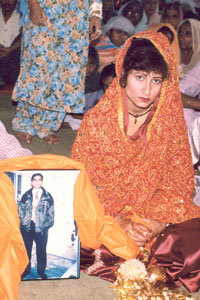 Blimey. Last week National Public Radio picked up a story about one of the newest scams to hit the community, that of Runaway Grooms. If NPR is doing a story about Punjabis and/or Sikhs, you’d hope it would be for something like this instead. So forgive me, if I think it’s disappointing (although maybe not surprising) that instead our community is the focus of an issue that seems to be quite prevalent in the Punjabi community in India and has links to England and North America aswell. Actually, it is very prevalent. Data suggests that 15,000 women in Punjab alone have been victim to men who, after getting married (and after taking the dowry money) return abroad never to be heard from again. Yup, these guys pull a Houdini. Here’s an excerpt from the NPR piece:
Blimey. Last week National Public Radio picked up a story about one of the newest scams to hit the community, that of Runaway Grooms. If NPR is doing a story about Punjabis and/or Sikhs, you’d hope it would be for something like this instead. So forgive me, if I think it’s disappointing (although maybe not surprising) that instead our community is the focus of an issue that seems to be quite prevalent in the Punjabi community in India and has links to England and North America aswell. Actually, it is very prevalent. Data suggests that 15,000 women in Punjab alone have been victim to men who, after getting married (and after taking the dowry money) return abroad never to be heard from again. Yup, these guys pull a Houdini. Here’s an excerpt from the NPR piece:
Satwant Kaur was full of hope and happiness on the day she got married. She had landed a husband who lived and worked overseas in Italy before returning to India to find a bride. She was looking forward to leaving her home in Punjab, northern India, for an exciting new life in Europe. Less than a week after the wedding, it became obvious that her husband, Sarwan Singh, had no intention of taking her with him back to Italy. She was the victim of a scam.
Women in India pay these men a hefty dowry in anticipation of the marriage and the promise to travel with them abroad. However, as it’s becoming increasingly clear, these men have NO intention of bringing their brides overseas and instead extort them of, what often is, their family’s savings. NPR may have picked this story up just recently, but this tale is not new. Ali Kazimi, a filmmaker, made a documentary about this called Runaway Grooms which has screened at various film festivals across the country. It’s a powerful film that leaves you in disbelief that this continues to happen in our community. What impacted me most about this film, however, was the strength that existed within these women who had quite clearly been abandoned. It reminded me of the same strength I see from Punjabi and Sikh women, that I know, who have come through similar tribulations.
At the root of this problem, and many others, is the tradition of daaj or dowry. Is this going away or has it’s form simply changed? I would suggest listening to the NPR piece and watching Runaway Grooms and then thinking about the impact this is having on our community. Our religion does not condone injustice, but more often than not, when those in our community are victims of fraud and lies, we always seem to look the other way…
Since May of this year a competition has raged throughout the Indian subcontinent. On Saturday November 24th, 2007, the results were in…the 1st Amul Star Voice of India: Ishmeet Singh from Ludhiana.
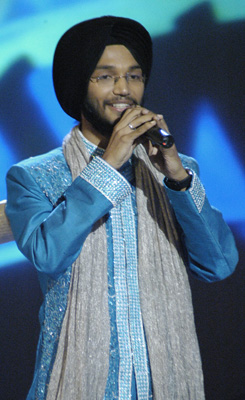 For those in the diaspora, who flip past the ZeeTV, Sony and all those other station as they channel surf, Amul Star Voice of India (SVOI) is the desi version of American Idol. After auditions throughout India, competitors are selected by the judges only to be later subjected to audience voting. Television viewers submitted text messages and finally after six months a winner was chosen.
For those in the diaspora, who flip past the ZeeTV, Sony and all those other station as they channel surf, Amul Star Voice of India (SVOI) is the desi version of American Idol. After auditions throughout India, competitors are selected by the judges only to be later subjected to audience voting. Television viewers submitted text messages and finally after six months a winner was chosen.
The famed Lata Mangeshkar declared Ishmeet Singh from Ludhiana, Punjab the winner. However, the win was far from guaranteed. The runner-up from Uttar Pradesh, Harshit Saxena, had been much more popular by the voters from the West Zone (60% of the votes), East Zone (52% of the votes), and the South Zone (55% of the votes). However, the winner of the competition was not to be decided on the number of winning zones, but rather the gross total. It was here that the Punjab factor kicked in and propelled Ishmeet Singh to victory.
While the blogosphere and message boards are aflame about the results, my purpose here isn’t to engage on the merits of the Ishmeet’s voice or the fairness of the competition methodology. However, the results do bring to the forefront a number of different issues.
An important result of the competition is to highlight Punjab’s ‘tele-density’. Prior to the announcement of the SVOI winner, many members of the interviewed Indian public lamented that Ishmeet would be catapulted to victory based on the fact that while the national telephone per capita is 1:5, in Punjab it is almost double at 1:2. Their gloomy predictions proved correct. The sheer numbers of SMS text messages aided Ishmeet in his victory. While Punjab’s population will never give it a seat at the Lok Sabha and the national stage, its economic and telecommunication power gave it leverage in this competition. Are there other uses for such technology? The Dera Sacha Sauda incident earlier in the year also shows telecommunications powerful ability as a political tool to rally youth support and attendance. Grassroots movements will have to be able to employ this tool to mobilize the Sikh youth and will have to figure out new ways to utilize its tremendous capabilities.
Waheguru Ji Ka Khalsa
Waheguru Ji Ki Fateh
Welcome to The Langar Hall. This is a space dedicated to the experiences, reflections, and interests of a diverse group of young individuals – tied together by our common and varied identities as Sikhs in the diaspora.
Like the many conversations that take place in langar halls around the globe, our blog posts will sweep across a gamut of topics from Gurbani and Seva to Bhangra and Politics. We challenge ourselves to address the myriad of issues we face as individuals and as a community through a progressive lens, and reserve the right to rant, muse, and humor.
Do you have questions or the feeling that some things just have not really been explained? Then join our conversations as we untangle complexities, explore grays, or just share things we find interesting and funny.
Let us conversate!
Waheguru Ji Ka Khalsa
Waheguru Ji Ki Fateh
Welcome to The Langar Hall. This is a space dedicated to the experiences, reflections, and interests of a diverse group of young individuals – tied together by our common and varied identities as Sikhs in the diaspora.
Like the many conversations that take place in langar halls around the globe, our blog posts will sweep across a gamut of topics from Gurbani and Seva to Bhangra and Politics. We challenge ourselves to address the myriad of issues we face as individuals and as a community through a progressive lens, and reserve the right to rant, muse, and humor.
Do you have questions or the feeling that some things just have not really been explained? Then join our conversations as we untangle complexities, explore grays, or just share things we find interesting and funny.
Let us converse!
